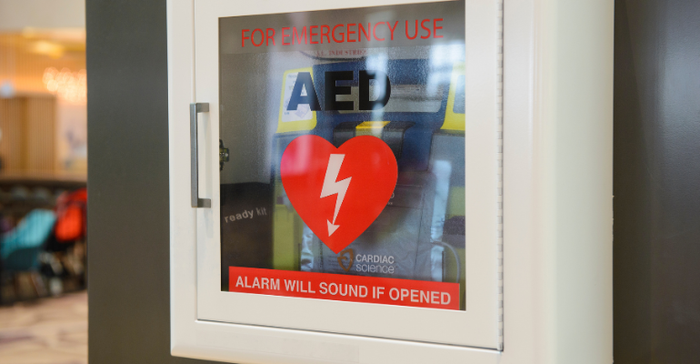The Evolution of a Life-Saving Medical Device That Talks
Trivia Tuesday: I'm a medical device that talks, and last year I helped save Damar Hamlin's life on live national television. What am I?
August 22, 2023

Now that the NFL preseason is firmly underway and fantasy football leagues are scrambling to sort out their draft picks, let's revisit a moment from last football season that fans are unlikely to forget any time soon: The moment Buffalo Bills' defensive back Damar Hamlin collapsed on the field on live national television.
Multiple specialists have since cleared Hamlin to return to football this season, ESPN reported in April. Officially, Hamlin was diagnosed with commotio cordis, a specific type of cardiac arrest. The American Heart Association describes commotio cordis as a very rare consequence of blunt force trauma to the heart at exactly the wrong time in the heart rhythm, causing the heart to stop beating.
Aside from the trainers and first responders who rushed to Hamlin's aid, it could be argued that the MVP of that Jan. 2 game against the Cincinnati Bengals was the automated external defibrillator (AED) that helped save his life.
Contrary to popular belief, defibrillators can only correct irregular heartbeat patterns, they cannot restart hearts. In Hamlin's case, the defibrillation delivered by the AED used by the team's trainer successfully converted Hamlin's rhythm to allow his heart to beat regularly again.
Automated external defibrillators have become so common in public spaces that they may be easily overlooked.

But there are many lessons to be learned from studying the evolution of the AED.
AEDs are also an impressive example of voice prompts enhancing user interactions with a medical device. The latest-generation defibrillators use voice prompts to guide users through the numerous steps required to perform a successful rescue. Spoken instructions, such as "stay calm" and "check breathing," spare the rescuer from having to read textual or graphical instructions, which would be more time-consuming and could create confusion.
The world's first portable defibrillator was launched by the Royal Victoria Hospital-Belfast in Ireland under the direction of doctors Frank Pantridge and John Geddes.
“Pantridge’s vision in the 1950s was that a defibrillator should be beside every fire extinguisher,” Dewar Finlay, interim associate dean of the school of engineering at Ulster University, told MD+DI in an interview in March 2022.
Although they had developed a mobile cardiac care unit, it was not convenient to use, as it weighed 110 lb. This was mainly due to the lack of miniaturized electronic components, particularly those required to power a defibrillator and provide the electrical energy needed to produce the required shock.
The research team, which formed the company, HeartSine in 1988, now owned by Stryker, continued to refine the device to make it more lightweight and portable.
You May Also Like

.png?width=300&auto=webp&quality=80&disable=upscale)
